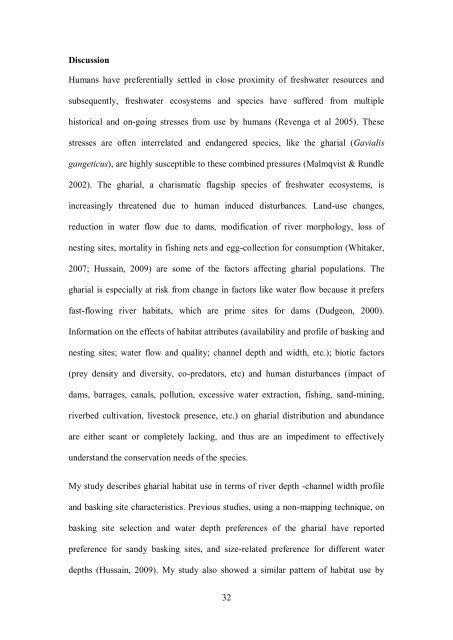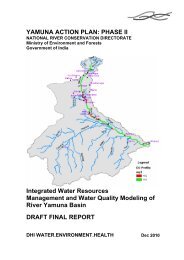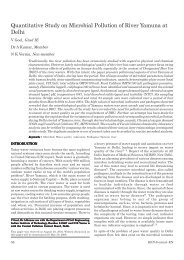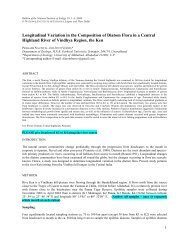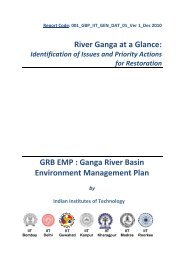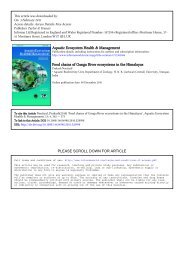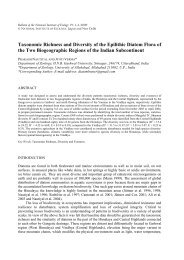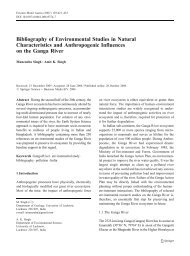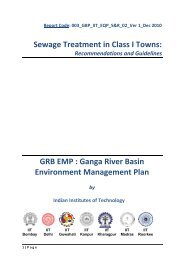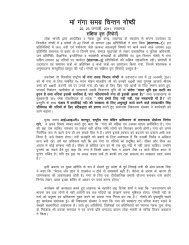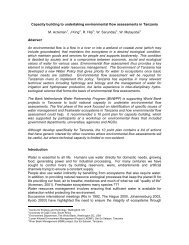Ecological and anthropogenic covariates ... - GANGAPEDIA
Ecological and anthropogenic covariates ... - GANGAPEDIA
Ecological and anthropogenic covariates ... - GANGAPEDIA
Create successful ePaper yourself
Turn your PDF publications into a flip-book with our unique Google optimized e-Paper software.
Discussion<br />
Humans have preferentially settled in close proximity of freshwater resources <strong>and</strong><br />
subsequently, freshwater ecosystems <strong>and</strong> species have suffered from multiple<br />
historical <strong>and</strong> on-going stresses from use by humans (Revenga et al 2005). These<br />
stresses are often interrelated <strong>and</strong> endangered species, like the gharial (Gavialis<br />
gangeticus), are highly susceptible to these combined pressures (Malmqvist & Rundle<br />
2002). The gharial, a charismatic flagship species of freshwater ecosystems, is<br />
increasingly threatened due to human induced disturbances. L<strong>and</strong>-use changes,<br />
reduction in water flow due to dams, modification of river morphology, loss of<br />
nesting sites, mortality in fishing nets <strong>and</strong> egg-collection for consumption (Whitaker,<br />
2007; Hussain, 2009) are some of the factors affecting gharial populations. The<br />
gharial is especially at risk from change in factors like water flow because it prefers<br />
fast-flowing river habitats, which are prime sites for dams (Dudgeon, 2000).<br />
Information on the effects of habitat attributes (availability <strong>and</strong> profile of basking <strong>and</strong><br />
nesting sites; water flow <strong>and</strong> quality; channel depth <strong>and</strong> width, etc.); biotic factors<br />
(prey density <strong>and</strong> diversity, co-predators, etc) <strong>and</strong> human disturbances (impact of<br />
dams, barrages, canals, pollution, excessive water extraction, fishing, s<strong>and</strong>-mining,<br />
riverbed cultivation, livestock presence, etc.) on gharial distribution <strong>and</strong> abundance<br />
are either scant or completely lacking, <strong>and</strong> thus are an impediment to effectively<br />
underst<strong>and</strong> the conservation needs of the species.<br />
My study describes gharial habitat use in terms of river depth -channel width profile<br />
<strong>and</strong> basking site characteristics. Previous studies, using a non-mapping technique, on<br />
basking site selection <strong>and</strong> water depth preferences of the gharial have reported<br />
preference for s<strong>and</strong>y basking sites, <strong>and</strong> size-related preference for different water<br />
depths (Hussain, 2009). My study also showed a similar pattern of habitat use by<br />
32


